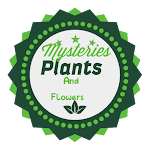The California Poppy (Eschscholzia californica) has long fascinated us with its enigmatic nature. After delving deeper, we've unraveled 15 mysteries surrounding this captivating plant:
1.Moonlight Bloom: California Poppies bloom in the evening to maximize pollination by nocturnal pollinators like moths and beetles.
2.Pollen Puzzle: California Poppy pollen contains a unique combination of proteins and lipids, making it an essential nutrient source for bees and other pollinators.
3.Golden Nectar: The plant's nectar contains a high concentration of sucrose, attracting pollinators and providing energy for their activities.
4.Dream Incubation: California Poppy has been used in indigenous dream rituals to enhance dream recall and promote lucid dreaming due to its sedative properties.
5.Chelidonic Acid Enigma: Chelidonic acid interacts with human brain chemistry to reduce pain and anxiety by binding to specific receptors.
6.Ancient Origins: California Poppy evolved from a common ancestor with other Eschscholzia species, adapting to its native habitats over millions of years.
7.Soil Microbiome: California Poppy's deep taproots create pathways for beneficial microorganisms, enhancing soil health and promoting ecosystem balance.
8.Wildlife Corridors: The plant's widespread growth creates a network of habitat connectivity, supporting wildlife migration and population stability.
9.Fragrance Chemistry: California Poppy's scent is composed of volatile organic compounds (VOCs), which attract pollinators and influence nearby plant growth.
10.Cultivation Conundrum: California Poppy's specific soil and climate requirements, combined with its short lifespan, make commercial cultivation challenging.
11.Native American Traditions: Indigenous communities used California Poppy in spiritual practices for its sedative and analgesic properties, as well as its vibrant color.
12.Pain Relief Paradox: California Poppy's pain-relieving properties work by targeting specific pain receptors, making it an effective natural alternative for pain management.
13.Lookalikes: California Poppy can be distinguished from similar-looking plants by its unique leaf shape, orange color, and delicate petals.
14.Pharmacological Potential: Research has uncovered California Poppy's potential in treating anxiety, insomnia, and depression, among other conditions.
15.Ecological Resilience: California Poppy's adaptability and widespread growth contribute to ecosystem resilience, supporting biodiversity and ecosystem services.
By unraveling these mysteries, we've gained a deeper understanding of the California Poppy's intricate relationships within its ecosystem and its potential applications. Share your thoughts and continue exploring the wonders of this captivating plant!





